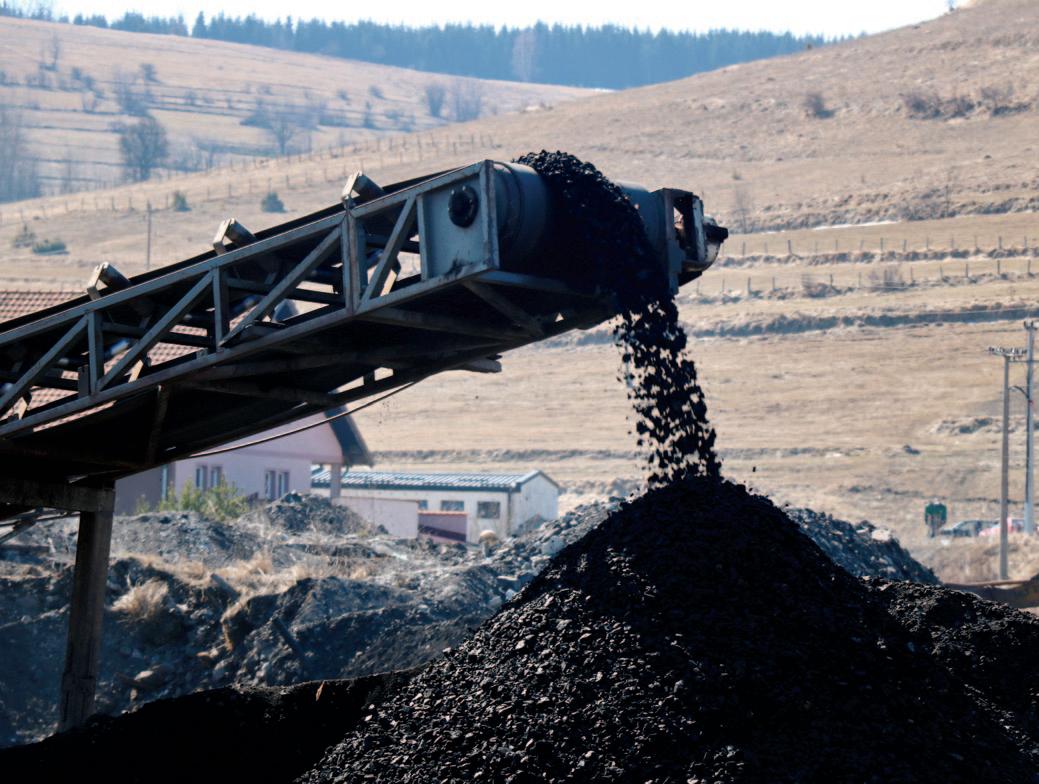
6 minute read
Ripping up the rule book — rip-resistant conveyor belts
Conveying coal is not always as straightforward as it may first appear because coal can contain some very nasty surprises in the form of foreign objects that can occur during transportation from the coalface to the conveyor. Lengths of rail track, pieces of mechanical equipment of every description, pick axes — the list is almost endless. As a result, a significant number of conveyor belts in ports and terminals have to be repaired and prematurely replaced due to accidental damage. Here, Rob van Oijen, manager of application engineering at Netherlands-based Dunlop Conveyor Belting, looks at the highly expensive problem of ripping and tearing and the rip resistant belts that seem to have thrown the rule book out of the window.
RIP AND TEAR RESISTANCE — FINDING THE BEST SOLUTION
On some applications, the ability to withstand the forces that rip and tear belts is often more important than any other physical attribute. A ‘rip’ is best described as what happens when a sharp object punctures the belt and cuts the belt lengthwise as the belt is pulled against the trapped object. In contrast, a ‘tear’ is what happens when a section of belt is pulled apart in opposing directions, much like when a telephone directory is torn apart by hand as a feat of strength.
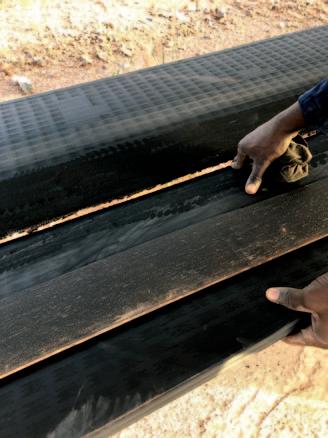
Trapped objects that rip the belt longitudinally are every conveyor operator’s nightmare. The whole event can be over before anyone has a chance to stop the conveyor. Even if a replacement belt is on standby, the financial consequences are invariably very bad news indeed, not least of which are the costs of lost production. Despite the seriousness of the risk, opinions seem to vary regarding the best way to approach the problem.
The most common misconception is that fitting belts with thicker outer covers and/or an increased number of plies will help. The fact is that belts that are too thick for the design of the application can cause new problems such as excessive rigidity (lack of troughability) and steering and handling difficulties. The same applies to increasing the tensile strength. The harsh reality is that unless the inner carcass and outer covers are engineered to resist ripping and tearing then using more of the same material will not provide the solution.
Another answer might seem to be replacing the multi-ply belt with a steelcord belt but this is also extremely unlikely to be the answer. Conveyors that use steelcord belts have to be designed differently from those that use multi-ply belts. Because of their innate tensile strength and low elongation (stretch), steelcord belts are typically only suited to conveying over longer distances. In any case, their Achilles heel is that although the steel cords themselves are very strong, they provide little or no protection. Trapped foreign objects that penetrate through the rubber covers run parallel with the cords, ripping the belt longitudinally. The only practical way to create rip resistance in a steelcord belt is by the use of breakers.
Using Breaker Plies To Increase Rip Resistance
The use of breaker plies can be a solution because they can provide a significantly increased level of resistance against longitudinal ripping, especially in the case of steelcord belts. However, before you take this path, it is important to bear in mind that breaker plies have to be embedded in the rubber covers during the manufacturing process so each belt has to be custommade. This means a much higher price per meter and invariably much longer lead times.
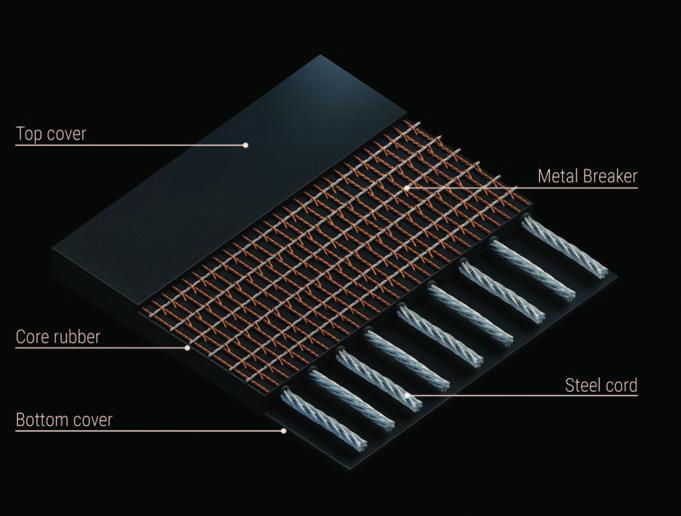
The breaker ply performs two functions — firstly it can help prevent the penetration of the belt by a foreign object. Secondly, it acts as a barrier if an object does actually penetrate between the steel cords or through the inner fabric plies and starts to rip along the length of the belt.
There are numerous types and strengths of breaker. The lighter weight versions are designed to simply absorb and dissipate energy whereas stronger, heavier weight breakers can actually stop the belt and limit the amount of damage. These are commonly referred to as ‘Rip Stop’ breakers.

Not Worth The Sacrifice
Another course of action when faced with repeated damage problems is to opt for low grade, ‘sacrificial’ belts most typically imported from Asia. The sentiment seems to be that it is not worth paying good money for a belt that sooner or later will be ripped from end to end. For me, this attitude does not make economic sense.
Cheap belts are low-priced for a very good reason and that reason is that they have been made using poor quality, unregulated raw materials. Low-grade belts lack the necessary durability and are very easily damaged. When you add the cost of incessant patch repairs, the splice repairs, the cost of replacement belt after replacement belt together with the invisible ‘un-invoiced’ cost of the lost production while all those unplanned stoppages are taking place, the true cost is several times higher than the price paid for the original belt. As the old saying goes, price is what you pay but cost is what you spend. The fact is that for conveyor systems where ripping and tearing is a problem, the most practical and economical solution is to fit a conveyor belt that has a carcass that has been specifically engineered for the purpose.
Engineered For The Task
The big advantage of specialist ‘fit and forget’ belts is that they have three or more times the resistance to ripping and tearing compared to steel reinforced and other conventional heavy-duty belt constructions of a similar tensile strength. Combined with premium grade rubber covers, these belts are proven to provide up to four or five times longer operational life, especially when compared to imported belts. They are not cheap and many would say that they are expensive but their cost over their working lifetime is substantially less plus there are the added benefits of being readily available from stock in Europe and being able to rely on technical support.
I am an engineer, not a salesman, but I can tell you, with hand held firmly on my heart, that the best examples of rip resistant belt that I have ever come across are Dunlop UsFlex and Dunlop Ultra X. For the heaviest, most demanding applications we recommend the use of the dual-ply Dunlop UsFlex 1000/2 and the single-ply UsFlex 630/1. For normal working conditions we advise the use of the single-ply Dunlop Ultra X. They are both totally unique to Dunlop and both are designed on the principles of the ‘minimum ply’ concept.
Less Is More
Conventional wisdom would seem to dictate that a higher number of inner plies will result in a stronger belt but in reality, this is not the case. The greatest influence on the strength and other essential physical properties of a conveyor belt is the actual design and quality of the ply material used to create the carcass.
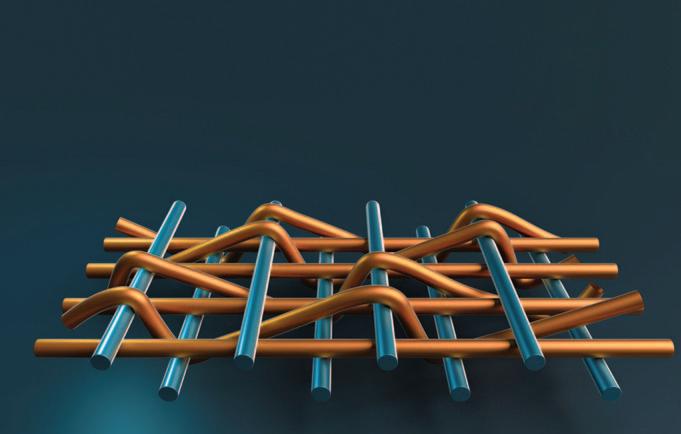
What makes the UsFlex and Ultra X belts so special are their uniquely designed super-strong fabric plies. In both cases, these fabrics are unique to Dunlop and can be manufactured in our own fabric weaving centre in the USA. As the belt is being pulled through a trapped object, the design pattern of the strands allows them together into a bundle that can eventually become strong enough to stop the belt or expel the trapped object. Strange as it may seem, synthetic plies are usually more effective than steel when it comes to actually minimizing the length of a rip. In fact, the UsFlex fabric is so strong we also use it as breaker plies in steelcord belts. In effect, an UsFlex belt is one long continuous ripstop breaker covered in super-resilient rubber!
For some, the very idea that a conveyor belt with only one or two plies can be dramatically stronger than a belt with multiple plies may not make much sense. However, the answer is entirely thanks to advances in technology and design. The analogy that I like to use is armour plating on military tanks. The composite armour used on military vehicles nowadays provides far greater protection than ever before and yet it is a much thinner and lighter construction compared the extremely thick, cumbersome heavy steel plating used in the past.
The Ultimate Solution
It is not difficult to understand why specialist belts like Dunlop UsFlex last so long when you hear about amazing tales of their strength like this one that recently occurred in Scotland. Several large pieces of granite became jammed against the tail pulley (see photo). The force was so strong that it dislocated the complete steel construction on which the tail and tensioning pulley was mounted. Amazingly, the UsFlex 1000/2 belt did not break. Instead, it simply kept on running. Whilst I appreciate that we are talking about transporting coal, not granite, it just goes to show how fantastically strong these specialist belts really are.
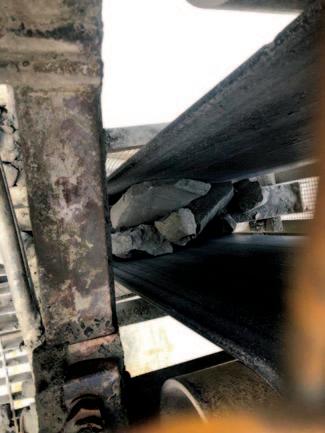
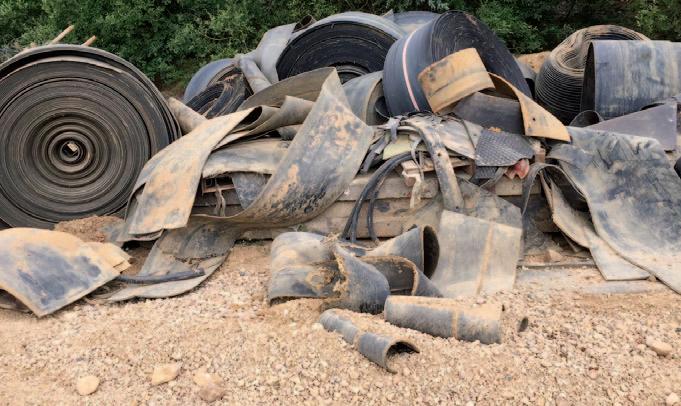
‘Sacrificial’ belts sacrifice productivity, money and time.
Ultra X belt also has its own claim to fame, including being used as the outer part of the safety barriers used on a Formula 1 race track. But these kind of remarkable experiences are nothing new. They have been happening for years. UsFlex and Ultra X continually prove to be the toughest belts out there. True, you can buy cheaper belts but UsFlex and Ultra X are the cheapest to run because that is exactly what they are designed to do; they run and run and run. It is not a question of whether you can afford them — the question really is whether you can afford NOT to use them?
ABOUT THE AUTHOR .
Rob van Oijen is Manager Application Engineering for Dunlop Conveyor Belting in The Netherlands. He has specialized in conveyors for some 15 years, supporting businesses throughout Europe, Africa, the Middle East and South America.











